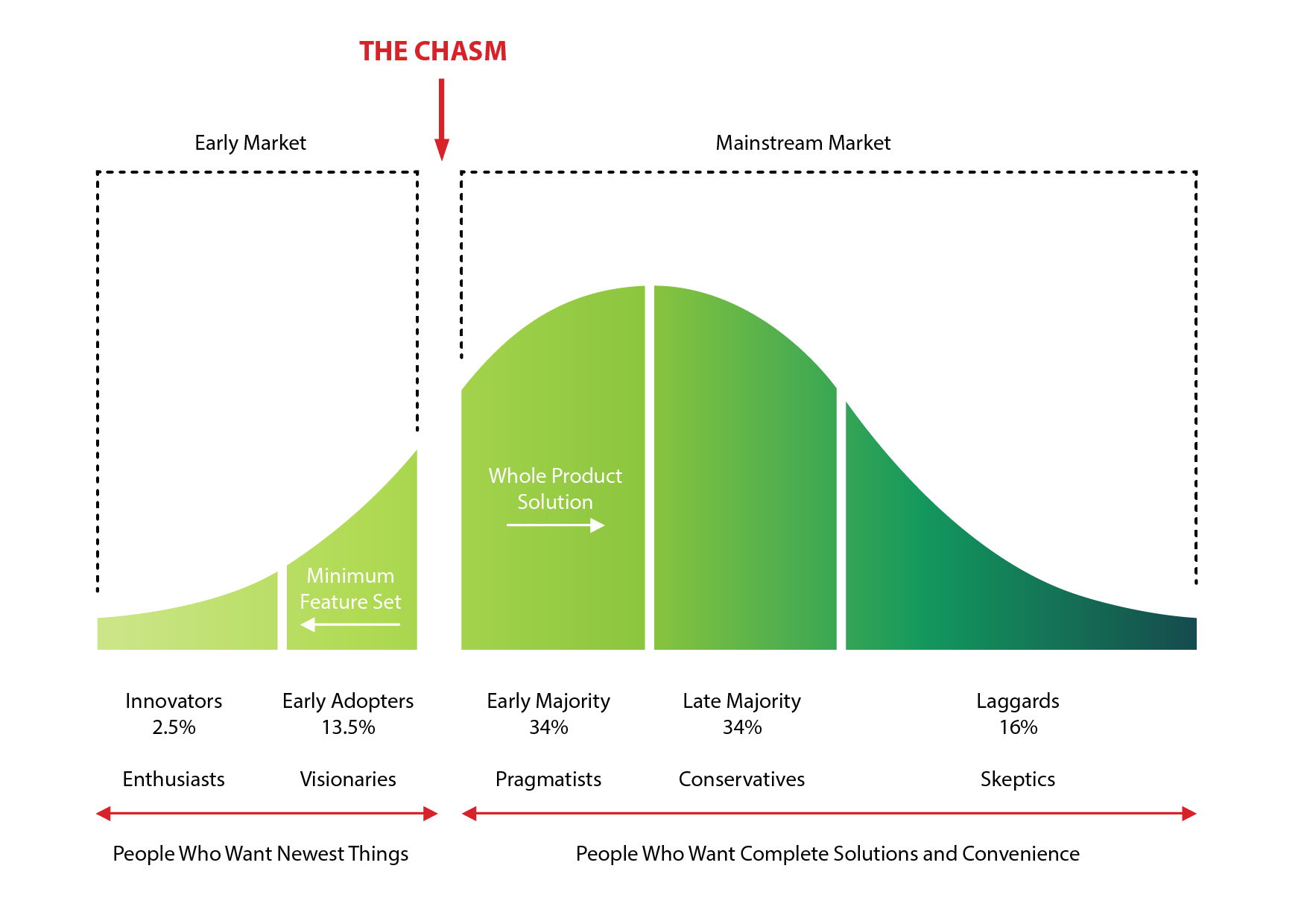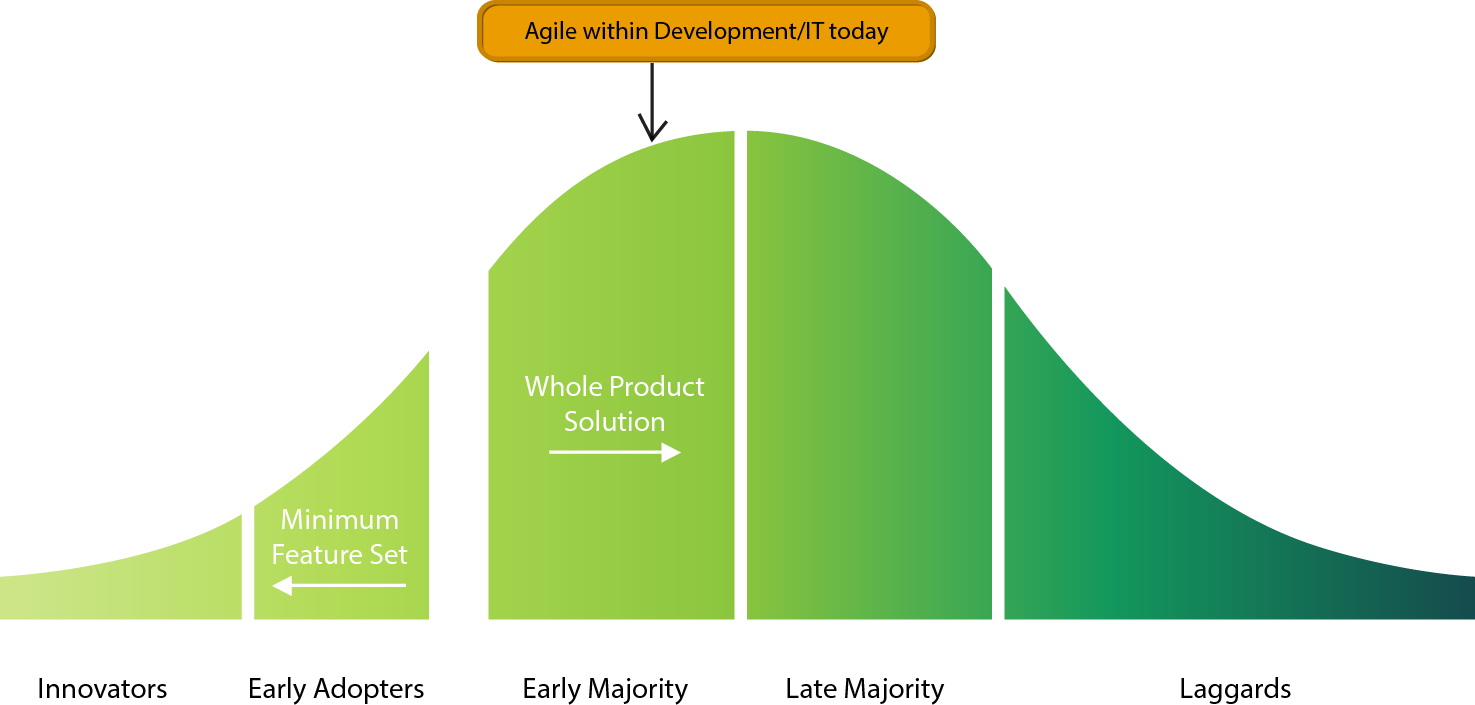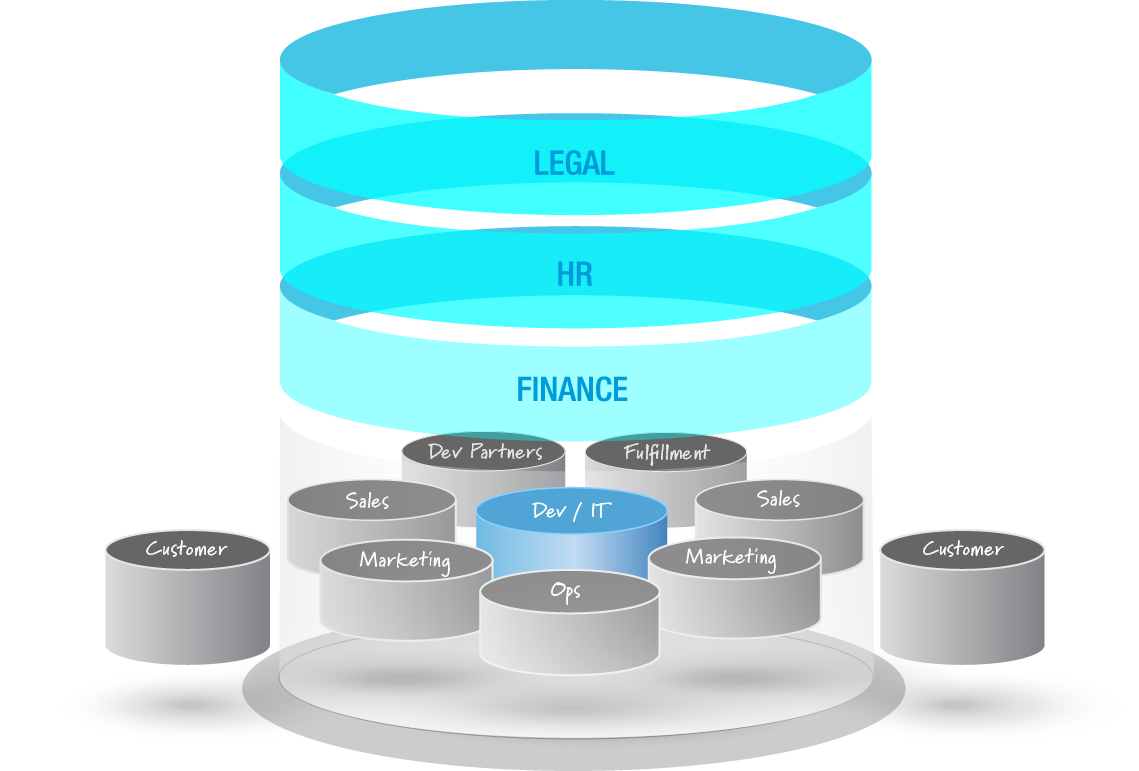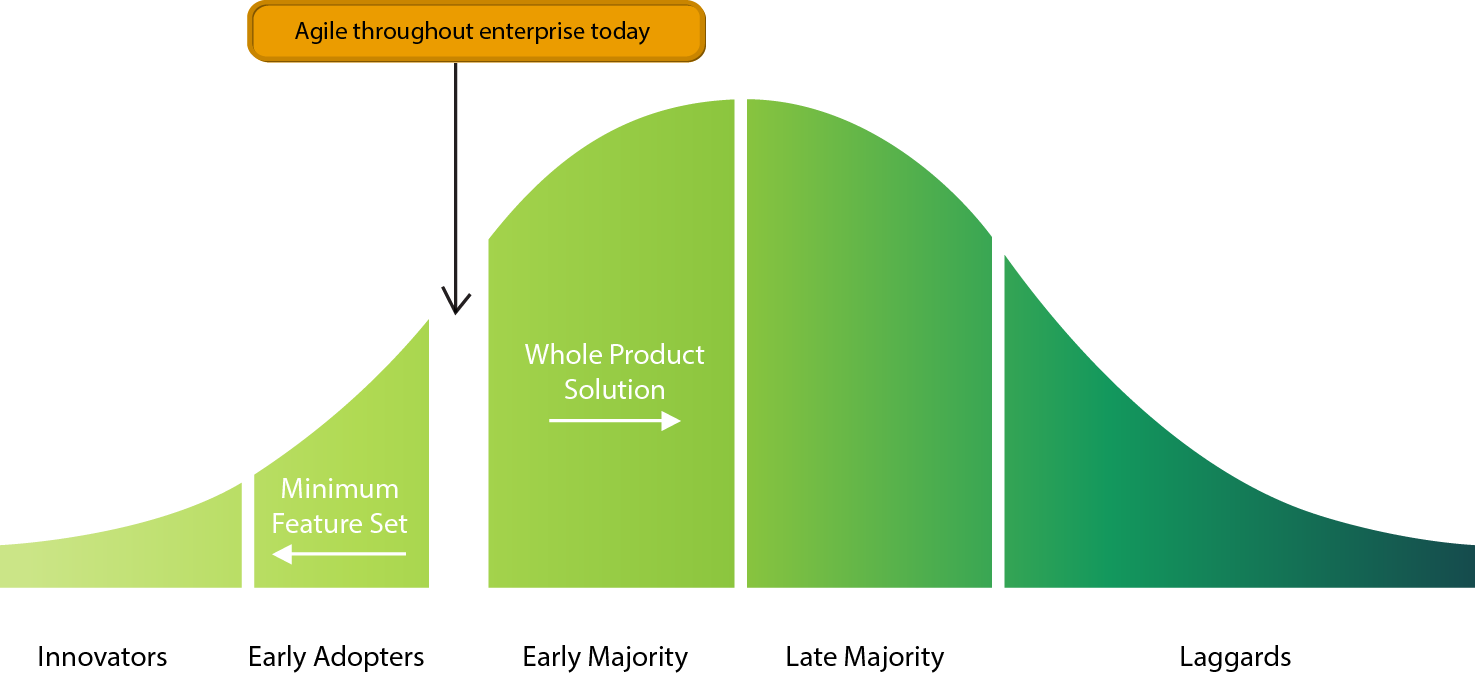[Editor's Note: After reading this blog posting, test your knowledge of the topic with the 5 question quiz at the end of the posting!]
For years now I have been hearing that agile has crossed the chasm—that agile has made the leap from being a new and unproven idea to more of an industry standard. I disagree, at least in part. I do believe that agile development has crossed the chasm because many Development/IT groups in mainstream organizations are using it. At the same time, though, I am also a firm believer that adopting agile only in the development group is not sufficient for realizing the true benefits of agility. Instead companies need to embrace agile through the various groups within a company that collaborate to deliver on the value proposition of the company (the value chain). Until this happens, agile adoption across the enterprise will remain in the chasm—a difficult and dangerous place to be. Let me explain.
Crossing the Chasm
In 1991 Geoffrey Moore published his book Crossing the Chasm, which popularized a Technology Adoption Lifecycle describing a general trend for how new technologies get adopted by customers. The basic structure of the model is illustrated in the following picture.

This model distinguishes between the early market and the mainstream market, and the chasm that exists between the two.
The early market is a time of great excitement, when the primary customers are technology enthusiasts and visionaries looking to get on board first with the new paradigm. These are people who see the potential of the technology and are perfectly okay using it even if it is not fully baked (i.e., a partial solution is fine since innovators and visionaries can see the potential and a pathway to a full solution).
A chasm exists between this early market and the mainstream market. The time technologies spend in this chasm can be quite difficult. Some innovations flounder in the chasm. This happens when visionaries no longer see them as a source of competitive advantage yet people in the early majority don’t view them as a safe bet or a proven practice. It’s no surprise, then, that many technologies die in the chasm—they never gain enough traction to make it across to the mainstream market (where most of the customers exist).
Those products that do make it across the chasm to the mainstream market encounter the pragmatists of the early majority, those who like to stay with the herd and whose reference group is made up of other pragmatists. They are interested in a complete solution that is easy to use and has high returns.
Beyond them are the conservatives of the late majority. These are companies that wait for the early majority to prove the technology works for companies like theirs. The people involved here have the old, “You’ll never get fired for buying IBM attitude.” They are not looking for a lot of services; they mostly purchase proven off-the-shelf solutions that are known to work in their situation.
The last group is the laggards. They come along kicking and screaming. By the time they adopt, the technology is really the standard solution, so they do so because they have to (think people who eventually had to purchase HD TVs in the US because all transmissions moved to HD and their old TVs would stop working unless they did something).
Has Agile Crossed the Chasm?
For years now I have been hearing that agile has crossed the chasm. The implication being that at least the early majority has embraced agile. Based on my own experience, and the data from numerous industry surveys that are performed each year, I believe that mainstream companies are doing agile development. In that respect, as mentioned previously, I would agree that after several decades agile development is firmly across the chasm, which is not too surprising given that agile typically makes its entrée into organizations through the Development/ IT group.

However, as I mentioned earlier, that does not mean that agile “within the enterprise” has crossed the chasm. As shown in the picture below, the Development/IT group is just one of many groups in the enterprise that must embrace agility for organizations to reap all of the benefits of an agile adoption. To truly cross the chasm, agile must also be embraced across the entire enterprise value chain, including in such groups as Sales, Legal, HR, Finance, and more.

Most every week I am out visiting one or two different companies so I get to see a lot of what they are doing with agile. It is clear to me that if you broaden your view to encompass more than Development/IT, the adoption of agile within the greater enterprise is not nearly as far along. In fact, I would suggest that as of Q3 2015 the current state of agile adoption throughout the enterprise (through the value chain) is squarely within the chasm. And, as I remarked earlier, this is a very risky place to be.

In my next blog I call-out some disconnects I see between various non-development groups and the Development/IT group. With such misalignment running rampant throughout their value chains, these companies’ long-term successful use of agile is in jeopardy. And, to the point of this blog, most companies are still quite new to adopting agile in these non-developmental groups, leading to my statement that agile throughout the enterprise (value chain) has not achieved mainstream adoption, but instead has only been embraced by some visionary companies that have proven it works in areas outside of Development/IT. However, such broad use of agile within companies is nowhere near mainstream adoption and is instead in a very precarious position.
Conclusion
Agile adoption with the Development/IT organization, what I refer to as agile development, has crossed the chasm. Agile adoption throughout the enterprise (value chain) is lagging far behind and in fact is dangerously positioned in the chasm. Companies that have embraced agile in Development/IT, but not throughout the value chain, have a significant misalignment problem that will prevent them from achieving the desired benefits from a broad agile adoption. In future blog postings I will focus on the some of the more significant misalignments that I have seen and how we can deal with them.